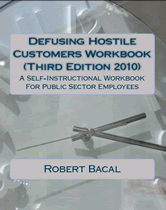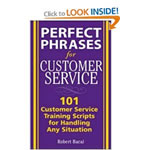
Getting Value From Training - Get Some ROI (Return On Investment)
There's a lot more on the subject of return on investment for training at the Training and Development Resource Center, in addition to hundreds of training and development articles, information about the business of training, a message area and much more.
All too often, potential benefits from training seminars are lost because the supports required for the application of learning are absent. And let's face it -- nobody can afford to send people for training just for the fun of it. We all expect that training will somehow impact upon a person's present or future ability to contribute to the employing organization. How do we "make it so"? That's our topic this month.
General Principles
Getting
value from training isn't magical. There are some general principles
that you can adapt to ensure that training for yourself and your
staff results in changes in the workplace. First, training that
adds value tends to be integrated with other management systems.
That is, training decisions and actions are
carried out with reference to performance management systems,
strategic planning processes, and career development initiatives.
Training must be managed so that it is planned, and deliberately
and clearly linked to workplace outcomes. When training is used
as a reward, or its goals aren't clear to all concerned, it is
rare that it has any positive impact.
Second, training that adds value actually has three components. First there is the training planning component. Then training occurs. Most important is the third component -- follow-up. Mechanisms must be in place to provide reinforcement to the learner for his or her efforts to implement what has been learned.
Finally,
training that adds value occurs when there is an infrastructure
in place that supports the learner's application of what has been
learned. For example, if people attend a workshop on the use of
a computer-based word processor, training will only add value
if the software and hardware is available and
in place when the person returns from training. While we normally
think of infrastructure as relating to things, it can also refer
to elements like time. For example, people attending a seminar
on the use of effective management techniques will only be able
to use what has been learned if they have sufficient time to do
so.
So, getting value from training requires integration, planning, follow-up and infrastructure. While getting value should be a shared responsibility on the part of attendee(s) and manager, the manager plays a critical role in helping to create the conditions under which training will add value.
Value Added Actions
Identify Development Needs
On a regular basis identify development needs of staff. Use your performance management system and your strategic planning processes to integrate HR development with the needs of the organization and each individual. Training will is most likely to add value when the needs of the individual and the organization coincide.
Contract With Attendees
Use an informal contracting process to define your expectations and those of training attendees. The training contract should include:
- how
you expect the training attendee to apply what he/she
has learned. - how the trainee is expected to share what has been learned
with other members of the organization. - what the trainee needs from you to so that learning can be
applied. - when you will meet with the attendee to debrief/discuss the
training and how it can be applied to your workplace.
Assess Infrastructure
Prior to training, make sure that the infrastructure is in place so that trainees will be able to apply what they have learned as soon as they return to the workplace. A good question to ask: "Is there anything that will impede the person's ability to apply what has been learned?".
After training, ask this question again.
Ensure Training Is Appropriate
Training
tends to add value when it is the solution to a problem. Not all
problems can be solved through training, so be alert to the possibility
that other solutions may be appropriate. Remember that training
can help people learn skills, but is less
effective at changing attitudes, and will likely have no effect
if the problem is related to other factors in the workplace.
Conclusion
All to often, managers do not take an active role in the decision-making and follow-up necessary to allow training to add value to the organization. As a result, resources may be wasted, and frustration can result. Keep in mind that managers need to work with training attendees before and after training so that the training will make a difference. Training must be linked to both individual and organizational needs, and barriers to application of learning must be removed. Often the manager makes the difference between training that is just a "vacation", and training that really brings about anticipated benefits.





